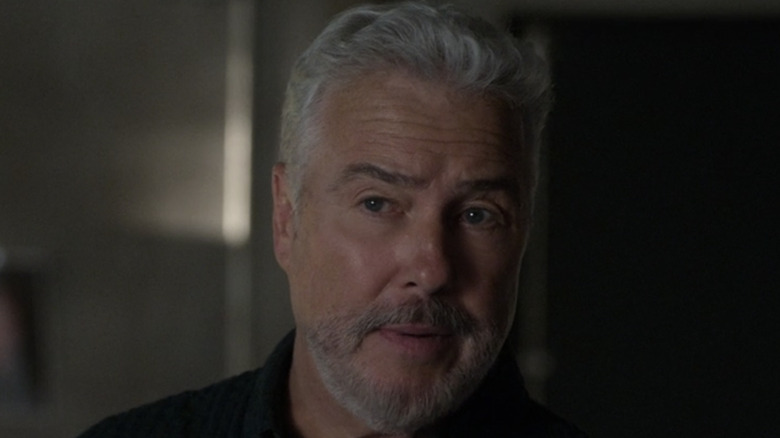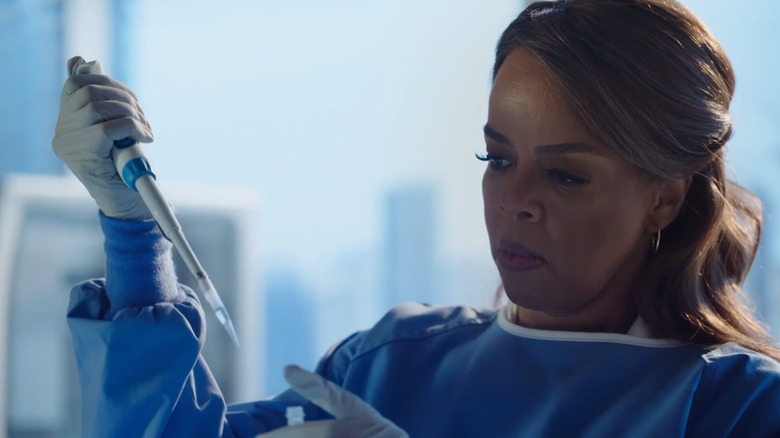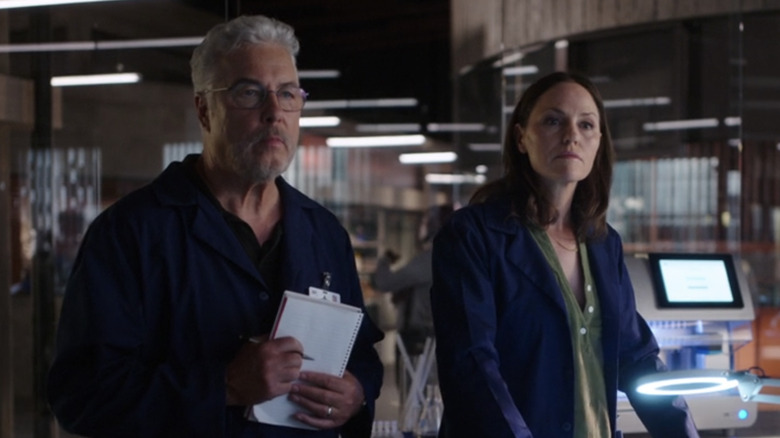What CSI: Vegas Gets Wrong About Forensic Science
If there's any rule still left in television, it's that a solid hit franchise always comes back. A sequel series to the original hit crime procedural, "CSI: Vegas" is also the first entry in the "CSI" franchise since "CSI: Cyber" was canceled in 2016.
"CSI: Vegas" premiered on October 6, 2021, and features original "CSI" stars William Petersen and Jorja Fox returning to their roles as Gil Grissom and Sara Sidle, respectively. Both Grissom and Sara retired after the events of the "CSI" series finale "Immortality," but come back to the lab when a major threat calls into question thousands of closed cases. The two veteran investigators will have to work together with new team members in order to keep the criminals they busted off the street. This includes new Crime Lab leader Maxine Roby (Paula Newsome), lead investigator Josh Folsom (Matt Lauria), and CSI Level II Allie Rajan (Mandeep Dhillon).
But much like the original "CSI" show, "Vegas" has already received scrutiny for its questionable depiction of the actual field of forensics. Here's what "CSI: Vegas" gets wrong about forensic science and the day-to-day procedure of working in a crime lab.
In real life, two people handle Maxine's job
On "CSI: Vegas," the leader of the Crime Lab, Maxine Roby, supervises both the forensics investigations and the CSI unit. But in the real Las Vegas crime lab, two people split the responsibilities of Roby's fictional role.
In real life, Kimberly Murga is the Las Vegas Metropolitan Police director of laboratory services and effectively directs the forensics lab. Kristin Grammas meanwhile heads the actual Crime Scenes Investigations unit (via 8 News Now). In fact, unlike the portrayal within "CSI: Vegas," the forensics division and the CSI unit work inside separate buildings in an office park.
And the real offices are nothing like the glamorous interiors shown in the "CSI" franchise. Grammas remarked that the television version of the lab "is all fancy and they have glass offices and cool lighting. Ours is fluorescent lightbulbs so it's not as cool, but we still have a lot of the cool technologies that they have on the show."
Real forensics still takes more time and effort than the TV version
Just like the previous "CSI" entries, "CSI: Vegas" rapidly speeds up how quickly investigators get lab and test results to create easily resolved storylines. Kimberly Murga told 8 News Now, "I really wish we could solve crime in 60 minutes," like the show's characters do. Cataloging and sending evidence to the labs takes time and effort, and unlike the show, forensics teams and crime scene analysts don't work together on all aspects of the case. There's also the reality that forensic science is sometimes not a reliable way to catch criminals (via BBC News).
Still, since "CSI" first premiered in 2000, DNA testing has come much closer to the show's portrayal thanks to technology speeding up results, and it's easier than ever to find fingerprint and genetic information. The franchise may have even helped real CSI labs expand once fans began pursuing degrees in forensic science (via The Telegraph).


